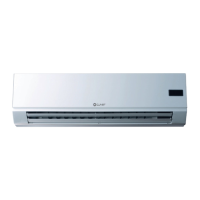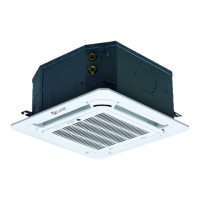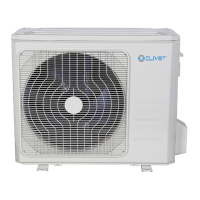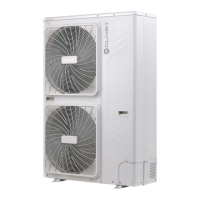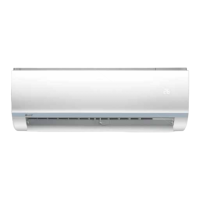Do you have a question about the CLIVET MM2-Y Series and is the answer not in the manual?
| Brand | CLIVET |
|---|---|
| Model | MM2-Y Series |
| Category | Air Conditioner |
| Language | English |
Essential safety advice for unit operation and installation.
Critical warnings, dangers, and prohibitions for safe operation and handling.
Identification and description of the indoor and outdoor unit components.
List and illustration of accessories supplied with the unit.
Details on how to identify the indoor and outdoor units using serial number labels.
Procedures for receiving the appliance and its size and weight specifications.
Crucial warnings and precautions to be observed before starting the installation.
Guidelines and considerations for installing the outdoor unit.
Criteria for choosing the optimal location for the outdoor unit installation.
Special considerations for installing the unit in windy or rainy conditions.
Steps for correctly installing the drain fitting and hose for the outdoor unit.
Procedures for securely mounting the outdoor unit on the floor or a wall bracket.
Detailed instructions for making safe and correct electrical connections for the unit.
Procedure for removing air and moisture from the refrigerant circuit using a vacuum pump.
Instructions for adding the correct amount of refrigerant based on pipe length.
Checks for electrical safety and gas leaks before system operation.
Steps to perform a comprehensive test of the unit's cooling and heating functions.
Detailed checks and procedures to verify correct unit operation during testing.
Guide to identifying and resolving common unit problems and anomalies.
Table of common unit issues, their possible causes, and suggested remedies.
List of error codes displayed on the outdoor unit and their meanings.
Detailed safety protocols and checks for working with R32 refrigerant.
Guidelines for safely repairing sealed refrigerant circuit components.
Procedures for repairing components that can be operated under voltage in flammable atmospheres.
Inspection of wiring for wear, corrosion, and environmental influences.
Prohibition of ignition sources for searching or detecting refrigerant leaks.
Acceptable methods for detecting refrigerant leaks, including electronic detectors.
Recommended procedures for removing and evacuating refrigerant for repair or decommissioning.
Guidelines for charging refrigerant, including contamination avoidance and cylinder handling.
Safe procedures for recovering and disposing of refrigerant and equipment.
Information on necessary labels for decommissioned units and flammable refrigerant content.
Detailed steps for safely extracting refrigerant for maintenance or decommissioning.
Regulations and guidelines for transporting, marking, and storing units with flammable refrigerants.
Information on the proper disposal of electrical and electronic equipment (WEEE), distinguishing between household and professional.
General guidelines for connecting refrigerant piping for optimal performance.
Instructions for correctly cutting refrigerant pipes to ensure efficient operation.
Procedures for removing burrs from pipe cuts to ensure a proper seal.
Steps for correctly countersinking pipe ends to achieve a perfect seal with the gasket.
Guidelines for connecting refrigerant pipes without excessive torque.
Detailed steps for connecting the refrigerant pipes to the indoor unit, including torque specifications.
Procedures for connecting refrigerant pipes to the outdoor unit's valve group.
Electrical wiring diagrams for the outdoor unit, showing connections and components.
EU Declaration of Conformity for the product, listing relevant directives and standards.

